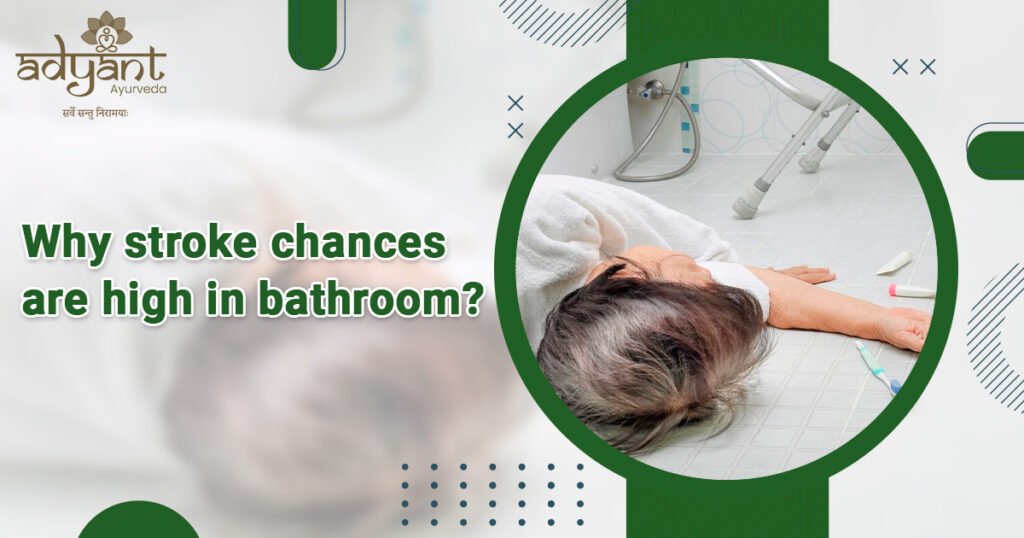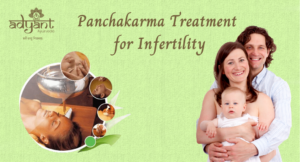
Adyant Ayurveda is a pioneering approach to holistic healthcare, emphasizing the harmony of body, mind, and spirit. In our commitment to enhancing overall well-being, we recognize the importance of identifying and mitigating potential stroke risks, especially those that may be associated with seemingly mundane aspects of daily life, like bathroom-related hazards.
In this blog, we will be understanding strokes, their risk factors, and the specific risks posed by bathroom-related activities, shedding light on how Adyant Ayurveda a Top Ayurveda Hospital with the Best Ayurveda Treatment for stroke can help address these concerns.
For a free consultation with ayurvedic doctors for Stroke Ayurvedic Treatment, download our app from Play Store “AyurCare“
Understanding Strokes
Strokes are a medical emergency caused by a sudden disruption in the blood supply to the brain. This disruption can be of two main types:
- Ischemic Stroke: Occurs when a blood clot obstructs an artery or blood vessel, leading to reduced blood flow.
- Hemorrhagic Stroke: Results from the rupture of a blood vessel in the brain, causing bleeding.
Both types of strokes can have devastating consequences if not addressed promptly.
Common Risk Factors for Strokes
Various risk factors increase the likelihood of experiencing a stroke, including:
- Hypertension (High Blood Pressure)
- Smoking
- Diabetes
- High cholesterol levels
- Obesity
- Physical inactivity
- Excessive alcohol consumption
- Family history of strokes
Impact of Lifestyle Choices on Stroke Occurrence
Lifestyle choices play a significant role in stroke risk. Poor diet, lack of exercise, smoking, and excessive alcohol consumption can contribute to the development of risk factors like high blood pressure and obesity. Ayurveda Treatment places great emphasis on lifestyle modifications that promote overall health, which can contribute to stroke prevention.
You May Also Like: Ayurvedic Treatment for Stroke
Identifying Bathroom-Related Stroke Risks
While it may seem unusual to associate bathroom-related activities with strokes, these risks are real and should not be overlooked. Adyant Ayurveda recognizes the importance of addressing even the most unexpected risk factors.
- Slippery Floors: Bathroom floors and surfaces can become dangerously slippery when wet, posing a significant risk of falls. Falls can lead to head injuries, concussions, or even hemorrhagic strokes if a severe head injury occurs.
- Excessive Heat and Humidity: Bathrooms are often humid and can become excessively hot, especially during extended showers. Prolonged exposure to high humidity and heat can lead to dehydration and increased blood pressure, which are risk factors for strokes.
- Straining During Bowel Movements: Straining, often due to constipation, can lead to a sudden increase in blood pressure, which is particularly dangerous for individuals already at risk of strokes.
Adyant Ayurveda’s Approach to Stroke Prevention
Stroke prevention is a crucial aspect of maintaining overall health. Adyant Ayurveda, a holistic healthcare system, offers a comprehensive strategy to reduce the risk of stroke through diet, exercise, specialized Ayurvedic treatments, and bathroom safety tips.
Diet and Nutrition Recommendations
- Balanced Diet: Ayurveda advocates a balanced diet incorporating all six tastes – sweet, sour, salty, bitter, pungent, and astringent – to maintain equilibrium in the body.
- Hydration: Proper hydration is essential for maintaining healthy blood circulation and preventing blood clots.
- Reducing Excess Salt: Lowering salt intake can help control blood pressure, a major stroke risk factor.
- Anti-Inflammatory Foods: Turmeric, ginger, and garlic reduce inflammation and improve cardiovascular health.
Regular Exercise and Relaxation Techniques
- Yoga and Meditation: Regular yoga and meditation practice helps reduce stress, improve circulation, and maintain cardiovascular health.
- Daily Self-Care Routines: Ayurvedic practices like Abhyanga (oil massage) and Nasya (nasal cleansing) enhance overall well-being and balance doshas.
Ayurvedic Treatments for Stroke Prevention and Recovery
Adyant Ayurveda offers specialized treatments that target stroke prevention and recovery:
- Navar Kizi: A rejuvenating treatment using medicated rice boluses that help restore nerve function and strength.
- Agni Lepam: A herbal paste application that improves circulation and reduces muscle stiffness.
- Basti Treatment: An enema therapy using medicated oils or decoctions that help detoxify the body and improve nervous system function.
- Choorna Kizi: A therapy involving the application of herbal powders in boluses to improve blood circulation and relieve muscle stiffness.
- Pizichil Treatment: A soothing oil bath therapy that enhances circulation, relieves stress, and promotes nerve health.
Tips for a Safe Bathroom Experience
- Install grab bars, non-slip mats, and proper lighting to prevent falls.
- Maintain a comfortable bathroom environment by regulating temperature and ensuring proper ventilation.
- Adopt gentle bathroom habits to prevent excessive straining and reduce sudden spikes in blood pressure.
Read Also: Ayurveda Insights into Overcoming Stroke and Paralysis
Conclusion
Adyant Ayurveda’s approach to stroke prevention combines dietary and lifestyle recommendations, specialized Ayurvedic treatments, and safety measures to ensure comprehensive protection against strokes. By adopting these practices and making necessary lifestyle adjustments, individuals can reduce their risk of strokes and lead healthier, more balanced lives.
Adyant Ayurveda promotes not only physical health but also mental and emotional well-being, aligning with the holistic principles of Ayurveda. Book your appointment now with Adyant Ayurveda for Stoke Ayurvedic Treatment.
FAQs on Stroke Chances in Bathroom
Q. Why do strokes occur in the bathroom more often?
A. Sudden temperature changes, straining, and high blood pressure fluctuations increase stroke risks in the bathroom.
Q. What are the common risk factors for strokes?
A. Hypertension, smoking, diabetes, high cholesterol, obesity, physical inactivity, excessive alcohol consumption, and a family history of strokes.
Q. How can Ayurveda help in stroke prevention?
A. Ayurveda provides a holistic approach including dietary recommendations, exercise, relaxation techniques, and specialized herbal therapies to support cardiovascular health.
Q. Why are bathroom-related activities associated with stroke risks?
A. Slippery floors, excessive heat and humidity, and straining during bowel movements can all contribute to increased stroke risks.
Q. What are some Ayurvedic dietary recommendations for stroke prevention?
A. Ayurveda suggests a balanced diet, proper hydration, reduced salt intake, and anti-inflammatory foods to maintain healthy blood circulation.
Q. How can one ensure a safe bathroom experience to minimize stroke risks?
A. Installing grab bars, using non-slip mats, maintaining a comfortable environment, and adopting gentle bathroom habits can reduce stroke risks.
Q. Can I get Ayurvedic stroke prevention treatment at home?
A. Yes! Adyant Ayurveda Home Care Services provides stroke prevention therapies at your doorstep. Call for home care services at +91-80505-39293
Take Charge of Your Health Today! Call +91-99725-41009.






